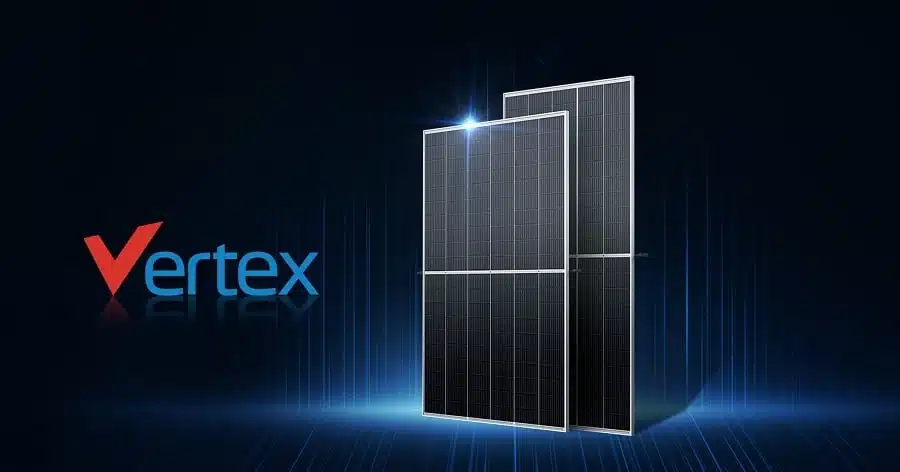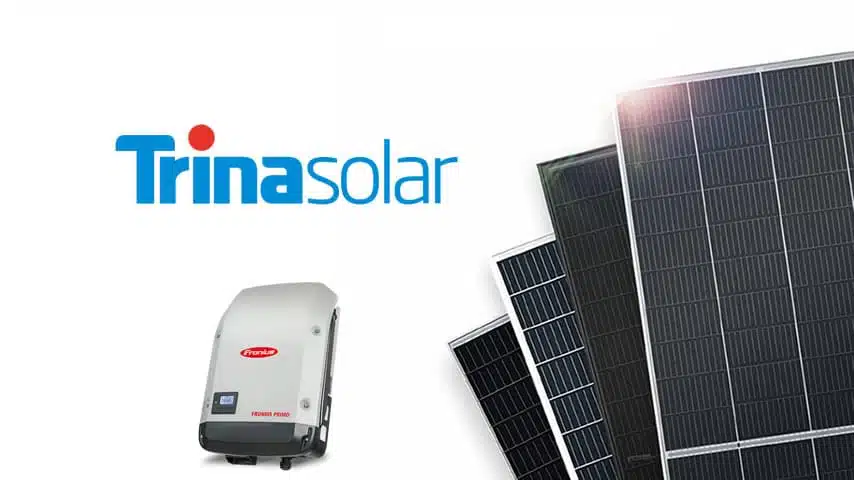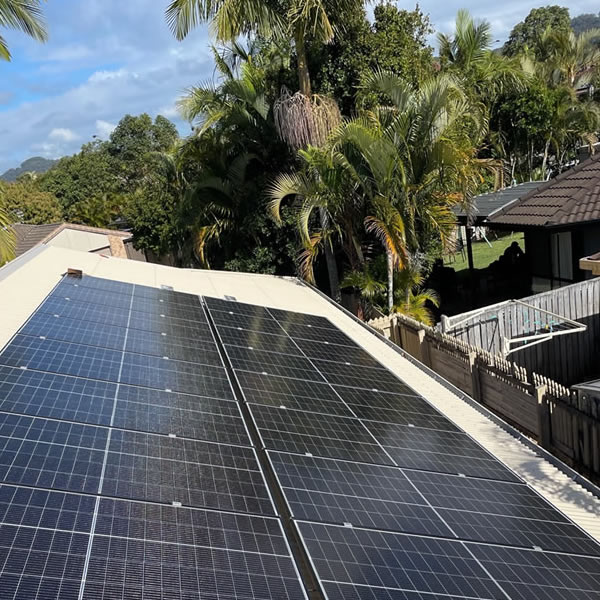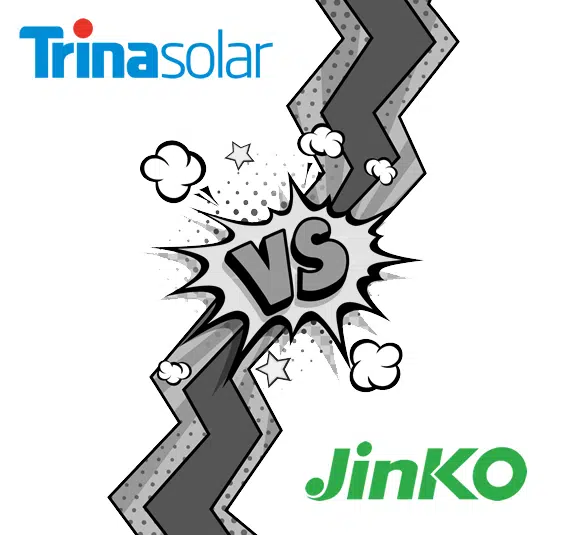Trina Solar Panels Review - Trina Vertex 390w 400w - HoneyM 370w
If you're considering installing solar panels, you may have come across Trina Solar Panels. In this review, we'll look closer at two popular models - the Trina Vertex Panels S 390W 400W and Honey M 370w, and explore their features, benefits, and drawbacks. We'll also provide an overview of Trina Solar's presence in Australia
Table of contents
- Trina Solar Panels Review - Trina Vertex 390w 400w - HoneyM 370w
- Trina Vertex 390w 400w
- Trina HoneyM 370W panels Review
- Trina Honey M - Visible Quality.
- Trina Panels solar Review
- How does Trina half cell technology create more power?
- How does Trina get Improved energy generation per watt?
- Where are Trina solar panels made?
- Trina Solar Australia Warranty and Service
- Trina solar panels vs Jinko: In Comparison
Trina Vertex 390w 400w
The Trina Vertex-S 390W - 400w Mono Perc solar panel has an impressive 20.3% efficiency rating. This is excellent for a “standard” sized panel. Many higher output panels are physically bigger which accounts for the difference in performance. Improved materials and design have allowed Trina to lift the power output and lessen resistance through the panel.Trina adds 15 years product warranty to these panels too!
How do Trina Vertex S panels give Better Performance and lower energy costs?
The unique Half-Cut cell design lets panels operate at lower temperatures, this in turn raises energy production per watt. The special cell design can also lower energy loss due to inter-row shading. As a result, greater power production capacity can be achieved when combined with multi-busbar technology as well.
Trina Vertex 390w - 400w Datasheet:

Trina HoneyM 370W panels Review
Advanced cell texturing techniques have enabled Trina Solar, to set a new output record of 20.02% solar cell efficiency – impressive! Trina with their Honey M product range, set new benchmarks in solar power and efficiency. Thereby challenging their competitors to continually meet them, setting the bar higher each time. For the Trina HoneyM 370w panel review, it’s fair, that for most, this panel will meet all of their rooftop PV needs. This company has grown to be a provider of some of the world's foremost solar solutions. Trina Solar PV products are now popular in well over 60 countries worldwide.
Trina Honey M - Visible Quality.
The Trina 370w solar panels is our favourite. Visibly well made, the high quality of these panels is so easy to see. The frame is rigid and also firm. There is precision in the construction of the panel, that we have so much come to expect from Trina.
Trina Honey M Datasheets:

Why Select Trina Solar Mono Black?
Trina Solar Honey Black cells offer higher power and efficiency with maximum cell efficiency is 20.2%. Combined with the 12-year warranty on Trina Solar products and a 25-year linear energy production guarantee, Honey Black is an investment you can feel good about. The panels are available in grid-connected or standalone applications. You will need an imroved MPPT-capable regulator, or a AC bus system, and 35mm thick panels.
The honey M 370W made with MBB - multi-busbar-cells design that reduces current conduction distances by over 50%, thus cutting down on the resistance losses inherent to a taper. With thinner, tighter-grained busbars, more sunlight is bounced back at the circular ribbon, thereby increasing the power efficiency.
he unique circuitry of half-cut cells allows for 1/4 less energy loss compared with full cells, resulting in reduced electrical resistance inside the ribbon, ultimately improving the total module efficiency by over 2%. The design of the half-cut allows modules to operate at lower operating temperatures, which may increase the power generated per watt. Unique string-cell structure allows each cell string to operate independently, significantly reducing power losses from mismatch problems caused by shading between rows
Trina Panels solar Review
More power created with half cell technology.
The Trina Solar Residential panel use half-cell technology. THe Solar cells are joined together by “connecting ribbons” which help the energy to flow through the panel. Half Cell tech reduces resistance to this flow. Imagine a full-sized solar cell...then cut it in half, Then connect the two halves in series Which is end-to-end. So, by doing this, the power loss caused by ribbon resistance drops to 25% of that in a full cell. So, this in turn decreases electrical resistance within the ribbon, to improve overall module efficiency by over 2%.
Better Performance Lowers Cost of Energy
The unique Half-Cut cell design lets panels operate at lower temperatures, this in turn raises energy production per watt. The special cell design can also lower energy loss due to inter-row shading. As a result, greater power production capacity can be achieved when combined with multi-busbar technology as well.
Improved energy generation per watt
Trina is revolutionizing the solar industry by maximizing efficiency and improving energy generation per watt. Gone are the days of bulky and inefficient solar panels that fail to meet the demands of today's energy-conscious world. Trina's innovative approach combines cutting-edge materials, advanced engineering, and meticulous attention to detail to create solar panels that are not only sleek and space-saving but also incredibly powerful. By harnessing the full potential of each watt, Trina's solution allows you to generate more energy in less space, making it the ideal choice for residential, commercial, and industrial applications.

6.63 Trina System, Sippy Downs, QLD
How does Trina half cell technology create more power?
The Trina Solar Residential panel carries half-cell technology. Solar cells on a solar panel (module) are joined together by “connecting ribbons”. They are the silver lines you see in panels. They are the pathway that let energy flow through the solar cells – the actual panel. Half Cell tech reduces resistance to this flow. Imagine a full-sized solar cell. Then cut it in half. Then connect the two halves in series. Which is end-to-end. So, by doing this, the power loss caused by ribbon resistance drops to 25% of that in a full cell. So, this in turn decreases electrical resistance within the ribbon, to improve overall module efficiency by over 2%.
How does Trina get Improved energy generation per watt?
The utilization of a half-cut cell design enables modules to operate at reduced temperatures, thereby enhancing energy generation per watt. The distinctive cell string structure effectively minimizes energy loss resulting from inter-row shading mismatches. Furthermore, the implementation of multi-busbar technology enables higher power generation capabilities in areas with abundant sunlight.
You Might Be Interested
Related Products
Where are Trina solar panels made?
Company Background, Over 20 Years Of Power.
Trina Solar has more than 20 Years of Power! Founded in 1997 and has in fact 20 years of experience in solar. So, while Trina makes most of its panels in China, it also makes them in Thailand and The Netherlands. Trina is the world’s largest panel maker, and as a result, number 1 on Bloomberg's Tier 1 list. As of Dec. 2020, Trina Solar has delivered more than 66 GW of solar modules worldwide, and over 15,000 employees worldwide. Trina has many patents, they have over 1,400, and they also sell right across Aussie.
Trina Solar Australia Warranty and Service
Superb Product, Superb Support
Trina Solar has a dedicated, fast and responsive team to support its customers in Australia and all over the world. With now 15 year product warranty, 25 year performance guarantee and a main office in Sydney, support easily found across the country. Trina Vertex S + is Trina Solar's first panel to offer a 25-year product warranty and a 30-year performance warranty due to the low degradation rate of the high-purity N-cell layer.
Trina solar panels vs Jinko: In Comparison
When it comes to selecting solar panels for your residential or commercial solar installation, it is crucial to invest in a reliable and high-performance product. When we compare Trina solar panels vs Jinko, they have both emerged as two leading brands, both known for their quality and efficiency. In this article, we will delve into a comprehensive comparison of Jinko Solar panels and Trina Solar panels, assessing their respective strengths and weaknesses to help you make an informed decision.
With a history of success, Trina has proven itself then as one of the top makers of solar panels. They have a similar approach to quality as Jinko Solar who are also one of their main rivals.
According to SolarQuotes.com, Installers Choice Awards 2022 (400+ installers), Trina has been voted as the Best Value Solar Panel in Australia’ with 17% of the voters, compare to Jinko solar who came second with 16%. Also, the Australian consumers rate Trina at 4.7 stars average from 1305 voters - pretty close to Jinko Solar which also received 4.7 stars out of 1649 votes. According to markets intelligence company InfoLink, 2021 Trina’s shipments to overseas markets accounted for 65%, an excellent achievement. Trina ranked second right after Longi Solar. Jinko Solar came forth.
Company Background and Reputation:
Jinko Solar, founded in 2006, is a Chinese multinational solar panel manufacturer with a global presence. The company has made a name for itself as one of the largest and most innovative solar module manufacturers in the world, boasting an extensive product range and a strong commitment to research and development. Trina Solar, on the other hand, was established in 1997 and is also a leading Chinese solar panel manufacturer. Trina Solar has consistently ranked among the top global solar module producers and has built a solid reputation for its commitment to sustainability and innovation.

Review Trina Panels Product Range and Features:
Both Jinko Solar and Trina Solar offer a wide range of solar panel products, catering to various consumer needs, including residential, commercial, and utility-scale projects.
Jinko Solar panels are available in both monocrystalline and polycrystalline options, with power outputs ranging from 400W to 580W. Their flagship product, the Jinko Eagle series, is well-regarded for its high efficiency, durability, and performance in low-light conditions. Trina Solar panels, similarly, come in monocrystalline and polycrystalline versions, with power outputs between 410W and 590W. The Trina Vertex series, a popular choice among consumers, is renowned for its high efficiency, sleek design, and excellent performance in various environments.
Efficiency and Performance:
In terms of efficiency, when review Jinko Solar and Trina Solar panels are highly competitive. Jinko Solar panels have an average efficiency rating of around 15.5% to 21%, while Trina Solar panels boast an efficiency range of 15% to 21.1%. When it comes to performance, both brands have proven their ability to withstand harsh weather conditions and deliver reliable energy production. However, Jinko Solar panels have a slight edge in low-light performance, making them a more suitable choice for areas with frequent cloud cover or shorter daylight hours.Warranty and Customer Support:
Both Jinko Solar and Trina Solar offer robust warranties for their products. On many panels now, Jinko Solar provides a 25-year product warranty and a 25-year linear performance warranty, ensuring long-term reliability and confidence in their solar panels. Trina Solar offers a similar warranty package, also with a 25-year product warranty and a 25-year linear performance warranty on most panels. In terms of customer support, both companies have established global service networks and are known for their responsive and helpful customer service teams.
Local Support in Australia:
For customers in Australia, Jinko Solar has a local office in Sydney, which provides sales, technical, and customer support to Australian clients. This local presence ensures that Australian customers receive prompt and personalized assistance when needed. Trina Solar also maintains a local office in Sydney, Australia, to cater to the needs of their Australian customers. This regional presence allows Trina Solar to provide dedicated sales, technical, and customer support services to clients in Australia, ensuring timely and efficient assistance for any queries or issues that may arise.
Trina solar panels review - Conclusion
Trina has been in solar for over 20 years, and hence has built a solid reputation in the local market. Since 2011, Trina has set 15 records for solar power output. The Trina Honey M panel has therefore gained strong market share here in Aussie. Many large projects here as a result, have chosen Trina as their preferred panel. Jinko can also display a similar track record of achievement.
In summary, both Jinko Solar and Trina Solar are reputable solar panel manufacturers with high-quality products, competitive efficiency ratings, and robust warranty packages. While Jinko Solar panels may hold a slight advantage in low-light performance, Trina Solar panels are equally reliable and efficient in various conditions. Furthermore, both companies offer strong local support in Australia, with offices in Sydney dedicated to serving Australian customers.
Ultimately, the choice between Jinko Solar and Trina Solar panels will depend on your specific needs, budget, and preferences. It is recommended to consult with a solar installation professional to determine the best solar panel option for your unique situation.

